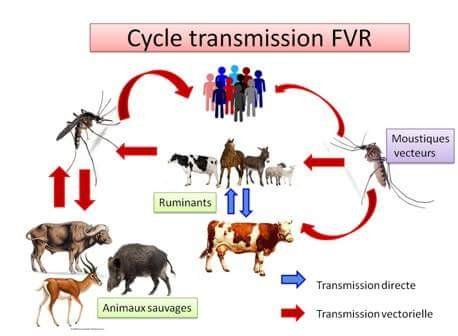Humans can be infected with RVFV from bites of infected mosquitoes and, rarely, from other biting insects that have virus-contaminated mouthparts. More commonly, humans are infected after exposure to blood, body fluids, or tissues of RVF-infected animals. This direct exposure to infected animals can occur during slaughter or through veterinary and obstetric procedures. Infection through aerosol transmission of RVF virus has occurred in the laboratory environment. No human-to-human transmission has been documented.
Several mosquito species are vectors for RVF virus. The dominant mosquito species vary by region, which in turn, impacts the common transmission cycles of RVFV. Environmental factors, particularly rainfall, seem to be an important risk factor for outbreaks: epizootic events and outbreaks in humans have been observed during years in which unusually heavy rainfall and localized flooding occur.
Several factors help explain this process:
RVF virus can be transmitted from female mosquitos to offspring via the egg (vertical transmission).
In the egg, the virus remains viable (infectious) for several years during dry conditions.
Excessive rainfall enables more mosquito eggs, commonly of the genus Aedes, to hatch.
As mosquito populations increase, the potential for virus to spread to the animals, including humans, on which they feed also increases
In epizootic events, there is increased handling of infected animals that then increases risk of exposure for humans.
interesting post. I will follow you
thank you yokee2
I hate how mosquitos can cause such a mess.
Mosquitoes vector
Hi! I am a robot. I just upvoted you! I found similar content that readers might be interested in:
https://www.cdc.gov/vhf/rvf/transmission/index.html
Cultura Bitcoin im followd you